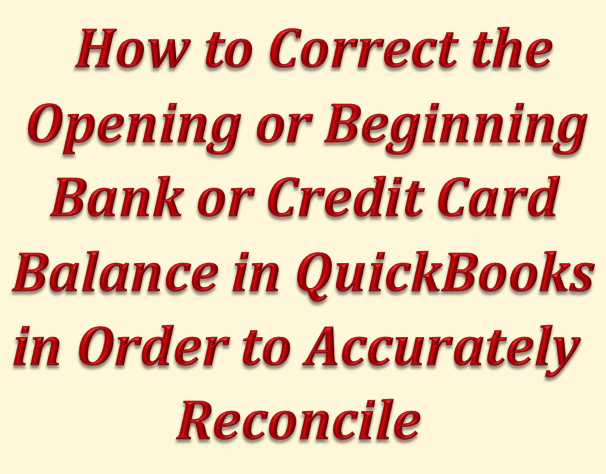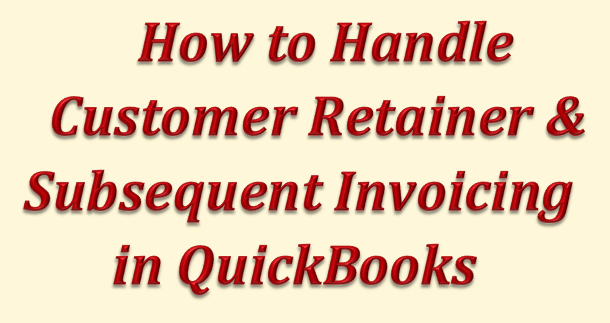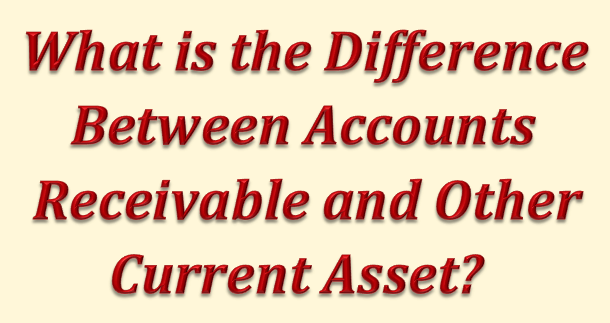by Marie | Aug 24, 2016 | Bookkeeping 101, Chart of Accounts Setup & Management, Deposits & Undeposited Funds, QuickBooks for Mac, QuickBooks for Windows, QuickBooks Online

Tenant security deposits are not income and as such, they are to be held until tenant is giving up lease or given notice to leave. If at this point there are repairs to be done, the cost of the total repairs will be deducted and the remainder of the deposit returned to the tenant.
Here is how you enter tenant security deposits correctly in QuickBooks:
- Create an account in your chart of accounts called Tenant Security Deposit, with its type “Other Current Liability”. To do this: a) Select List from the top menu bar, then Chart of Accounts. b) At bottom left, click on the plus sign (in the mac version) or Account then New (in the Windows version – Pro, Premier, Enterprise). Next:
- Go to Banking, Make Deposits and enter the correct date, the tenant’s name in the “Received From” column, select the liability account you just created in the “From Account” column, and enter the payment type, reference number, memo, and amount of the deposit. Be sure to select the bank account you will deposit the tenant’s security deposit to, at the “Deposit to:” drop down option at top left.
- Click Save, Save and New or Save and Close.
In QuickBooks Online, a) Go to Transactions in the left menu bar, then select Chart of Accounts then New at top right of screen. Next:
- Go to the Plus sign at top center of screen, then select Bank Deposit under “Other”
- Enter the correct date, the tenant’s name in the “Received From” column, select the liability account you just created in the “Account” column, and enter the payment type, reference number, description, and amount of the deposit. Be sure to select the bank account you will deposit the tenant’s security deposit to, at the top left drop down option.
- Click Save and New or Save and Close at bottom right.
Any question(s), please feel free to browse our Frequently Asked Questions categories or drop Marie a note.
by Marie | Apr 26, 2016 | Bookkeeping 101, Importing Files & Forms To QuickBooks, Third Party Applications - QuickBooks Compatible

There are three (3) options to accomplishing this task.
Option 1:
You can backup the file you last used – each time you use it, and restore it to the next computer you will be using. This is highly discouraged! Under no circumstances would I advise using multiple copies of the same QuickBooks data file; however, it can be done. The problem with this is that transferring your QB data file back and forth opens the door for errors, which can be very costly. There is so much that could go wrong! Just imagine that you end up having some data in one file and not in the other, while the other has some data that is not in the one you are currently using. Disaster!
To Backup QuickBooks File to Removable Storage Device:
Go to File, Backup, and select the location of the Removable Storage Device. Then click Backup or Start Backup.
To Restore QuickBooks File from Removable Storage Device:
Open the QuickBooks company file on your computer, and go to File, Restore a backup copy, and confirm “YES” when prompted.
For Mac computer, double click on the QuickBooks file on the flash drive or other storage device with your backup, then drag it to your desktop or location you wish to store the file. QuickBooks Mac Pro does not overwrite previous files, instead it creates new disk images with each new file. Because of this, you want to ensure that you keep careful track of the current file in use. You do not want to be using multiple files, thinking that it’s the same file, but realizing later that pieces of your information are in various QuickBooks files. If you are the only one using this file on both computers, and you insist on getting things done this way, be sure to make a note of the last entry you made along with the date just before you backup each time after using. Then, look if that last entry is in the file you are about to use, before you start updating it with new transactions.
Option 2:
You can establish your office computer as the “primary” data file, and use a remote access program such as Go to My PC to access and work on it from home. This way, the QuickBooks data file on your office computer remains the primary file, while allowing you to update it remotely and thus using one file. The problem with this, is that you will need to leave the office computer on, in order to access it.
Option 3:
There are also hosting options available such as, Swizznet.com where you can store your data and access from anywhere with an internet connection; however, like QuickBooks Online, your “real” data is not on your hard drive. If you are going to use this route, you may be better off using the Online version of QuickBooks.
by Marie | Apr 25, 2016 | Bookkeeping 101, Company Setup & Management, Invoicing & Receivables, QuickBooks for Mac, QuickBooks for Windows, QuickBooks Online, Reimbursements and Investments

The most common cause of this problem is that some items are using COGS for the income account. If you have invoices with items that have a COGS account as their income account, this will definitely cause a negative Cost of Goods Sold. Review the invoices hitting COGS and see which actual items are involved and then change the items in the item list. You have more credits than you do debits and those credits are coming from invoices hitting Cost of Goods Sold. COGS should be a debit with no invoices in the detail. You need to look at the invoices that are hitting COGS and see which exact line item it is. That is the item that has the incorrect account for income. That said, there a few other things that can cause the COGS to be negative.
Few things that can cause the COGS to be negative:
- Using an item on the invoice that has a COGS account as the income account
- Using an inventory item on a credit memo
- Using the COGS account as a credit on a journal entry
- Using the COGS account on a deposit
To fix the negative Cost of Goods Sold problem:
To locate and correct this issue, you need to start by generating a detail transaction report of your Cost of Goods Sold account(s). Once you have done that, double-click on all the negative transactions to see what exactly is causing the problem. You can also select the Reports button at the top of the transaction (not the top-level menu) and then select Transaction Journal. You can press Ctrl Y while the transaction is open to see what the underlying journal is.
You are looking for amounts in the Credit column for the COGS account – debits increase it, credits decrease it. If you are using items, inventory and other functionalities of QuickBooks, the direct problem could be one or more bills, checks, credit card charges, Invoices, credit memos, journal entries, or deposits. This report will show you exactly what is causing it.
In addition, you need to make sure that reimbursable expense is an Income account if you have reimbursables, and also ensure that the option is checked in the Preferences to track reimbursable expenses by going to Edit, Preferences, Time & Expenses, Company Preferences and make sure “Track reimbursed expenses as income” is checked.
Similar Articles:
by Marie | Mar 26, 2016 | Bookkeeping 101, Business Types & Accounting, Chart of Accounts Setup & Management, Personal and Business Expenses, QuickBooks for Mac, QuickBooks for Windows, QuickBooks Online, Reimbursements and Investments

The way in which these startup expenses are entered will depend on how the owner wants to treat them – loan or investment, the way the business is structured – Sole Proprietor or Single Member LLC, Partnership or Multi Member LLC, or Corporation, as well as when these expenses were incurred.
What are Startup Expenses or Costs?
Before we get into the above, let’s start off with the main question: What are startup expenses or costs? Not everything is a startup cost and to determine what is and isn’t a startup cost we have to look at whether the costs were incurred prior to the start date of the business (costs to be amortized) or subsequent to the start date of the business (costs to be expensed). Startup costs are those expenses that were incurred prior to the start date of the business, and are amortized over a number of years so they are not a total expense in the first year. Initial costs – market research, advertising the future opening of your business, salaries for training employees before the business opened, incorporation costs, trademarks and the likes are startup costs.
As for amortization, that’s just a fancy accounting term accountants like to use when they refer to the process of spreading costs out to more than one year. They are usually intangible costs like legal fees, government filing fees and the likes. Fortunately, amortization is generally a straight-line process; you take the costs and divide them by the number of years and expense by that portion. It is always important to consult a CPA prior to booking startup costs.
If there are technology equipment such as computers or furniture in the initial purchases, you will need to separate them if they are used in the business, since they will need to be depreciated. Depreciation is generally for tangible items such as buildings, equipment, computers, furniture, vehicles, etc. Again, speak with your CPA about what was purchased in order to have all the startups entered accurately, as well as to get the help in setting up a depreciation schedule. For tax purposes, the IRS has specified fixed asset lifespan depending on what kind of fixed assets they are.
Journal entries are the best method to use when entering startup costs, regardless of the type of startup, the type of business structure, or whether the startup is a loan or an investment to the business. You will create an “Other Asset” account under which you can make sub accounts where you will be debiting the transactions, and an equity or loan account where you will be crediting them – depending on if the owner is investing or lending the monies to the company – respectively.
If some of these startup expenses are fixed assets, you will need to create individual Fixed Asset accounts for each, with the corresponding entry going to the Equity or Loan account. If there are multiple small transactions to be entered, you can enter them via the asset account register or the Equity or Loan account register you created. This way you will be able to enter as much information as possible including the dates of each transaction.
Whatever you do, just make sure that you get the correct equity balance to start off with; that is, how much did the owner(s) put in the business to start the business? In taxes, the equity accounts will be used to track the owner’s basis, which is adjusted up for income, owner’s contributions and other items, and down for losses, draws, and other items. Depending on the type of structure – sole proprietorship, LLC, partnership, C-corporation, S-Corporation, business losses may or may not be deductible for tax purposes if the owner does not have enough basis to deduct them against.
You should also speak with your CPA about whether it is better to consider these startup costs a contribution by the owner to the business, or a loan to the business to be paid back at some point in the future, as it relates to taxes.
Another way to enter these initial expenses on QuickBooks for a Sole Proprietor or Single Member LLC, is by using a Credit Card Account called something like “Owed to owner” and entering the expenses from there. This will increase the liability balance while allocating the expenses to their relevant business expense account. If the business pays it back, use the credit card account on the check which will zero out the credit card account. If it does not pay the monies back, use a journal entry to transfer it to the owner’s contribution account. Of course, this is based on what the initial startup costs are.
This is an option used by many QuickBooks users, and although it will make the accounts “accurate”, I do not recommend it from an accounting standpoint. Bookkeeping should be seamless and trackable! Just imagine that someone takes over the bookkeeping and trying to figure out the books, they will no doubt be looking for a business credit card since one would have been entered. For this reason I do not recommend using this method. Why add a credit card to the business in QuickBooks when there isn’t actually one for the business?
Similar Articles:
by Marie | Mar 26, 2016 | Banking Setup & Management, Bookkeeping 101, Deposits & Undeposited Funds, Invoicing & Receivables, QuickBooks for Mac, QuickBooks for Windows, QuickBooks Online, Reconciliations

In order to use the undeposited funds correctly, it is important to understand how it really works. What are undeposited funds? Think of the Undeposited Funds account as an envelope where you keep checks until you take them to the bank. If you deposit more than one check or payment in a group deposit, you can enter those transactions so that your Bank Register matches your Bank’s monthly statement.
How to Accurately Use the Undeposited Funds Feature in QuickBooks
To use the undeposited funds accurately:
- When you record each customer payment, choose Group with other undeposited funds instead of Deposit to a Bank account.
- When you have all the checks entered and you are ready to actually deposit them in your bank, use Bank Deposits which is found under the Plus Sign Icon at the top of QuickBooks Online. In the desktop versions, go to Banking in the menu bar, and select Make Deposits.
- In the Bank Deposits or Make Deposit screen, click the drop-down to select the bank account you would like to deposit the funds to. This would of course be the bank account that you actually put the money in.
- Select the appropriate Date, and class or location if you are using them.
- You will see a Payments section. These payments listed are the ones you recorded and marked to go to undeposited funds. You can now select which of these payments should be included in this deposit to reflect the lumpsum deposit that was actually made to the bank.
- Click Save.
In order for this process to be successful, you must remember to go to the Bank Deposits window (in QuickBooks Online) or the Make Deposit window (in the desktop versions – Pro, Premier), and deposit the monies to the bank register in QuickBooks. Otherwise, they will just sit there, and if someone else is doing the reconciliations at the end on the month, they may actually enter those payments again directly to the bank register without realizing or even knowing that they were already in the Undeposited Funds account.
As you can see, there are still deposits in your undeposited funds account because the proper procedure was not followed. If the accounts were already reconciled for the period in which the transactions in the undeposited funds account relates, then the entries were entered twice – incorrectly increasing the revenue and may require an amended tax return to be filed if the tax for that period was already done.
I have explained indepth how to correct this in my articles:
by Marie | Mar 26, 2016 | Banking Setup & Management, Bookkeeping 101, Deposits & Undeposited Funds, Invoicing & Receivables, QuickBooks for Mac, QuickBooks for Windows, QuickBooks Online, Reconciliations

The main purpose of the undeposited funds feature in QuickBooks, is to give users the option of receiving customer payments and applying them to their Invoices on the dates received, while having a place to house them until they are ready to be deposited to the actual bank account. This is called “grouping deposits” in QuickBooks to reflect the lumpsum deposit that was made on a particular date. The undeposited funds feature can be a huge time saver, especially when it comes to reconciling bank accounts. You should absolutely use the undeposited funds feature:
- If you do not deposit each payment received from customers individually. If each deposit is done separately at the bank such as payments received from PayPal, Square, Shopify etc., there is no need to use the undeposited funds feature. If you receive customer payments via check or cash and you combine them to make one deposit into your bank account, then you need to post the individual payments to undeposited funds first. You will later go to Make Deposits and select the customer payments that made up the total deposits that were actually deposited on a specific date. You will need to ensure you change the date for the deposit in the “Make Deposit” window to reflect the date the deposits actually went into the bank. So, you use the undeposited funds when more than one payment is included in a deposit. That way the deposit in QuickBooks matches the deposit on your bank statement which will make it easier when it’s time to reconcile the bank account.
If you do not use the undeposited funds, then the amount is recorded directly in the check register. So, if you actually deposited several checks at once, you can imagine what a nightmare it becomes when you try to reconcile the checkbook. It creates lots of extra work – needlessly. If you use undeposited funds, then you “make deposits” that match the deposits you sent to the bank, which makes life much easier!
- When checks are received and not immediately deposited in the bank. This way, you will know the day the checks arrived and the day they were deposited. Using the undeposited funds feature in this case, will allow you to record the customer payments for the date in which they were received, and thus show accurate customer receivables while at the same time being able to deposit them on the date they were actually deposited. Without using the undeposited funds, it may be difficult to figure out what payments in QuickBooks make up what deposits on the bank statement when it’s time to reconcile the bank account.
When all is said and done, it is better to use the undeposited funds feature for all deposits, than to not use it for any deposits at all – especially deposits of more than one customer payments. You will have a more seamless, less time-consuming reconciliation process which is super important.
How to clear undeposited funds that were entered in error
If “in error” you mean that the transactions were to be sent directly to the bank account register instead of the undeposited funds account, then you can correct this either by: a) locating and editing the individual payments in question and changing the “Deposit to” field to the bank account. Or, b) you can deposit each payment in the “Make Deposit” window to the bank account by checking each one and changing the date to reflect the date it was actually deposited.
If “in error” you mean that the deposits were doubly entered; once directly in the bank via the check register, and again in the undeposited funds account, the cleanest, but also most time-consuming way to clear these items from the undeposited funds account or “Make Deposit” window is to open the corresponding deposits that were made without selecting from undeposited funds, click on the green Payments button, add the payment from undeposited funds, and then delete the incorrect payment that was entered. As long as the total deposit is unchanged, it will not unreconcile the previous reconciliations. However, if there are a lot of transactions in the undeposited funds account, it could take a really long time trying to resolve this. Why can’t I just delete them? You may ask. It is never okay to just delete anything from QuickBooks without knowing what other accounts and transactions may be affected. These customer payments in the undeposited funds account or make deposit window, may have been applied to Invoices. Deleting them will throw the accounts receivables out of balance, leaving the customers owing more in QuickBooks than they actually do in reality.
Bear in mind that most people who bypass undeposited funds use a revenue account to make the deposits, which means the revenue is possibly overstated – if those deposits are again applied to Invoices and are sitting in the undeposited funds account. So if you are trying to correct a period that you have already filed tax returns for, you will need to discuss this with your tax professional. You may need to file an amended tax return.
by Marie | Mar 26, 2016 | Banking Setup & Management, Bookkeeping 101, QuickBooks for Mac, QuickBooks for Windows, QuickBooks Online, Reconciliations

The way in which you handle a beginning balance that does not match your statement depends on whether or not the account has ever been reconciled in the past. If it has never been reconciled, you can change the opening balance by following these steps:
- Go to List in the menu bar and click Chart of Accounts.
- Double-click the account in question to open to the register.
- Locate the account’s opening balance transaction which is usually the first transaction in the register or look for the Opening Balance Equity in the Account field of the register.
- Change the amount to the correct opening balance that is on the bank or credit card statement.
- Click Record.
You may have entered your opening balance incorrectly. An opening balance transaction is created when you create a new account. You may have added a bank account during the EasyStep Interview, or you may have created a bank or credit card account at any time after the interview. Following the abovementioned steps will get your opening bank balance in Quickbooks on par with your bank account balance for that period.
If the account has previously been reconciled – at least once, and the opening balance was ok then, you need to locate the discrepancy. In this case, you cannot just change the beginning balance; you need to find out why the beginning balances are different. Some reasons that may cause the discrepancy are:
- You may have uncleared a transaction directly in the account register by mistake. If you do this, your beginning balance will be off by that amount. You will be able to see this in the Reconciliation Discrepancy report if one is available in your version and edition of QuickBooks. Otherwise, you could run a report to view the transactions that are unreconciled for that period, and try to locate them on the statements. Hopefully, there aren’t many unreconciled transactions for that account in the period in question.
or
- You have changed or deleted a previously cleared transaction that you have already reconciled. To fix this, you will need to undo the previous reconciliation, then reconcile again with the correct transactions. If the option is available to undo the previous reconciliation in the reconcile window, then undo all the previous reconciliations to the date where both the bank or credit card statement and the QuickBooks beginning balances are the same. If the undo previous reconciliations option is not available in that version and edition of QuickBooks, you will need to go to the Bank or credit card account register and uncheck the transactions one by one.
by Marie | Mar 25, 2016 | Bookkeeping 101, Customer Setup & Management, Invoicing & Receivables, QuickBooks for Mac, QuickBooks for Windows, QuickBooks Online

There are two types of retainer fees: one type is used as a downpayment where a customer or client pays a lawyer an amount, for example, and when the lawyer does work for the client he Invoices for that portion and offsets the Invoice total against the downpayment. The Invoice portions for work done are recorded as Income, with the corresponding total going to the retainer liability account decreasing the customer retainer balance. At the end of the year, depending on the agreement both party has, the retainer balance will either be returned to the customer or forward to the new year.
The other type of retainer is when a customer or client pays a company an amount of money for a period of time – say one year, so that they can have the privilege of using their service(s) during that period. This type of retainer in non-refundable, whether the client uses the service(s) or not, for this period. At the end of the period – usually a year, the retainer should be moved from the liability account to an Income account. This can be done via a journal entry by debiting the retainer liability account and crediting the Income account.
There are usually more than one ways to do things in QuickBooks, but this is the best option to handle customer retainer and subsequent invoicing in QuickBooks, and it can be used for both scenarios above:
- Create a Liability Account called something like “Retainer Liability” using a current liability account.
- Next, create an item called something like “Retainer” and map it to the retainer liability account you previously created.
- Use that item on the invoice or sales receipt for the retainer transactions. This will increase the retainer balance.
- After the work is performed, create an invoice or sales receipt like you normally would, with the appropriate sales items. Then add a line with a negative amount using the retainer item. This will increase sales Income and decrease the retainers account, as well as reduce the Invoice or sales receipt down to the remainder due.
Reconciling the Retainer Account
To reconcile the retainer account each month, go to your Chart of Accounts and reconcile your Retainers as you would a credit card or bank account. There is only one difference; enter your statement balance for the end of the month as ZERO. Then check off all the retainers that were charged and used up. The total of the checked items should equal zero, and the total amount owing should consist of all the unchecked items.
by Marie | Mar 25, 2016 | Bookkeeping 101, Customer Setup & Management, Financial Statements & Reports

Accounts Receivable is a current asset that is only established in the form of Income to be received from a Customer that has been Invoiced. It is the amount a company has a right to collect because it sold goods or services on credit to a customer. In general, when a customer is Invoiced for goods or services you provide them, the total Invoice amount will be shown on both the Income or Profit and Loss Statement, as well as the Balance Sheet.
If a downpayment or deposit was received for the goods or services, the total Invoice amount would still be shown on the Income Statement; however, the deposit would be applied to the Invoice and entered or deposited in the bank account in which it was actually deposited, while the remaining balance that is owing and unpaid would be entered in the Accounts Receivable account. In other words, any monies that a company is owed by a customer, is a receivable.
It is very important for a company to monitor its Accounts Receivable and to immediately follow up with any customer who has not paid as agreed as per the terms of agreement be it 15 days, 30 days, etc. There is an aging of accounts receivable report tool in software such as QuickBooks that will help to monitor each customer’s Accounts Receivable, and as a general rule, the older a Receivable gets, the less likely it will be collected in full.
While Current Assets are cash or cash equivalent, such as Accounts Receivable and Inventory, Other Current Assets are small less significant items on a balance sheet lumped together because they do not include the major current assets, and as such are not important enough to be listed separately. They are not cash or cash equivalents, and represent a limited source of liquidity for a company – for example advances paid to suppliers or employees. Notations are usually available for the breakdown of these minor assets.
by Marie | Mar 24, 2016 | Bookkeeping 101, Business Types & Accounting, Personal and Business Expenses, QuickBooks for Mac, QuickBooks for Windows, QuickBooks Online, Reimbursements and Investments

As a business owner myself, I know that it is unavoidable at times – mixing business with personal funds, but this is not good business practice and should be avoided as much as possible. Why? Because, it is very easy to overlook business expenses that are paid with personal funds, and it is the best way to have IRS auditors going through all your personal affairs even though an issue is a business one. Since those monies do not directly affect the business bank or credit card accounts, you will need to make a concerted effort to track those expenses and record them appropriately on the business books.
Entering business expenses paid for with personal credit card or cash on the business books will depend on the structure of the business:
- For a Sole Proprietor or Single-Member LLC, the expenses should be entered to the relevant expense categories via Owner’s Draw/Equity. You will use this account for monies going in and out of the business by the owner. The Owner’s Draw/Equity accounts may have negative balances from time to time which will look odd on the balance sheet. So, it’s important to prepare a journal entry zero-ing out or offsetting these balances at the end of each month, quarter, or year.
- For a Partnershp or Multi-Member LLC, the expenses should be entered via Member Contribution if the owner is investing it, or loan based on the partnership’s operating agreement.
- For a Corporation, the expenses should be entered as loan if the owner will need to recoup the funds, or Equity Contribution if the owner wants to invest it in the business. If they are to be entered as loan, you will need to make the loan official, with repayment terms, interest, etc. Also, bear in mind that the IRS sometimes re-characterizes loan repayments as dividends – with serious tax implications. In this regard, a CPA should be consulted before deciding how to book these monies in QuickBooks.
In addition to the above mentioned effects of mixing business and personal funds, the mixing of business and personal funds can also pierce the corporate veil, and expose corporate business owners to personal liability which defeats the purpose of having a corporation to begin with. Sole proprietors already have personal liability, but not a corporation as it is an individual entity in itself. Separate business and personal financials at all cost, but if you do not, remember to enter them in their appropriate places and keep a record of receipts in the business files.












Recent Comments